Don't cry, darling. By Nastia Nekypela
The revolutions of modern times invariably have one major flaw in addition to all their inevitable strategic and tactical shortcomings: interpretations, conceptualization and even factual information on them come dramatically late, sometimes decades, even centuries after the event. Meanwhile, mythologies and outright falsifications are woven around them.
 The Art of Maidan written by Dr. Natalia Moussienko and translated into English by journalist Andriy Kulykov can qualify as the first effort in to process, classify and systematize the yet red-hot substance of the Revolution through purely academic means. The means that are usually used when the revolution cools down a bit. But this is exactly the point where the mythology begins.
The Art of Maidan written by Dr. Natalia Moussienko and translated into English by journalist Andriy Kulykov can qualify as the first effort in to process, classify and systematize the yet red-hot substance of the Revolution through purely academic means. The means that are usually used when the revolution cools down a bit. But this is exactly the point where the mythology begins.
Dr. Moussienko studies the phenomenon of the latest (but probably not the last) Ukrainian Maidan virtually in parallel with the event and strictly in accordance with the classification techniques that allow the streamlining of everything said and heard there. As a result, we are presented with a systematization of what happens just now, this very moment. We get an event and precise intellectual conceptualization of it at the same time. Such things happen rarely, or never at all.
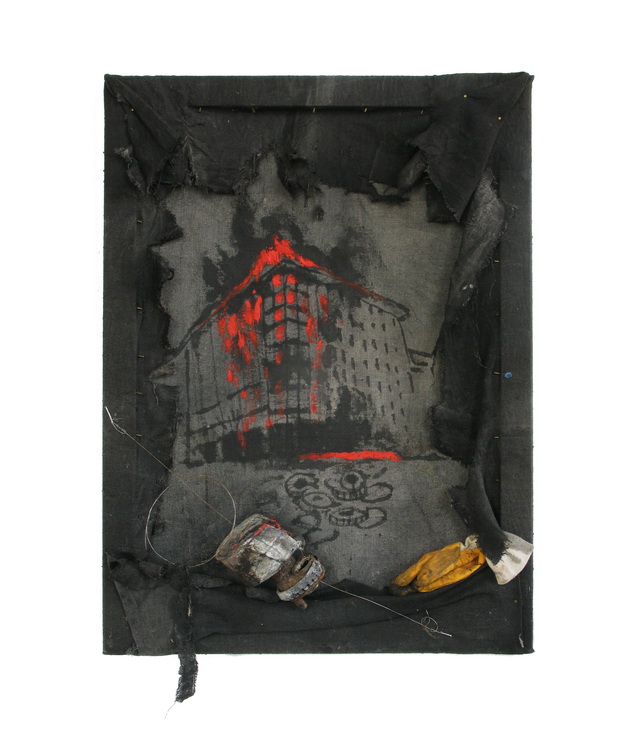
The Trade Unions' Building by Hlib Vysheslavsky
In fact, it was journalism, notably news reporting, that had once appropriated the task of synchronizing events and stories about them. Here, we recall the top standards of frontier revolutionary reporting by the French Restif de la Bretonne or American John Reed. However, I would not advise anyone to study the history of the French or Russian revolutions based on these masterpieces of the genre, because they are, at the same time, the masterpieces of political mythology.
Unlike them, Dr. Moussienko's book is, in fact, an academic paper. It is an effort to calculate, define, and list a certain sum total of the Maidan phenomena that will retain its educational value in the future, whatever it may be. The book presents the objective landscape of the 2013-2014 Maidan from the closest possible "time zoom" perspective; it looks at all convulsions and spasms of the then “objective reality” which, by its incredible dimensions, is probably unparalleled.
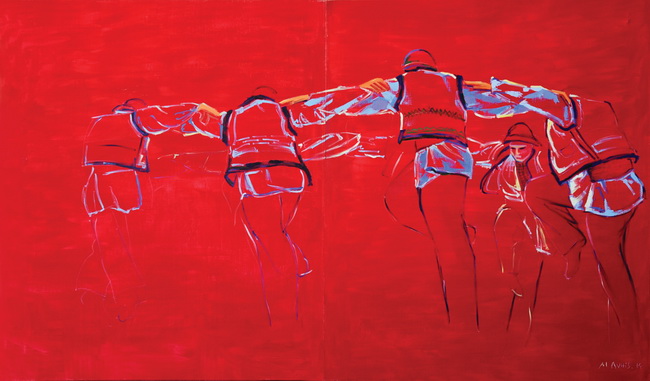
Arkan, a folk Hutsul dance, by Marian Luniv
However, it has to be noted that the Art of Maidan, despite the author’s obvious political sympathies, is not about politics. In fact, its extensive coverage looks away from the Maidan’s political dimension proper.
Instead, it focuses on art. Some may find it surprising, but this is probably the most effective "cognitive" took for the truly “optical” understanding of those events.
The political motley, the diversity of Maidan and its sociological scale do not require any special comments or justifications. It was what it had to be. The eye of the researcher, philosopher and art critic focuses on an entirely different phenomenon.
In the harsh world, alienated in all of its ways and aspirations, there remains only one not yet alienated human gesture: the artistic or aesthetic one, to use the professional argot. It is organic and existential. It could be the last refuge for us humans in the labyrinths of the extremely complicated modern civilization. In this portrait of the Maidan landscape, Dr. Moussienko noticed one interesting phenomenon: a volcanic explosion of the artistic or "aesthetic" component in all of Maidan's territories.
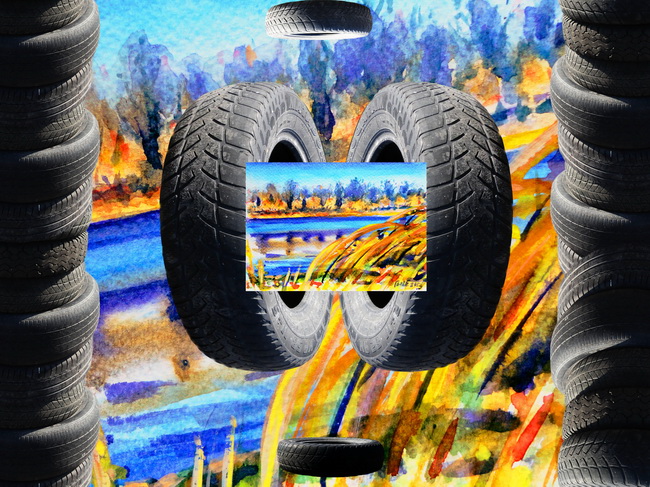
Invasion by Olena Golub
Like all of us, Dr. Moussienko remembers the days of the pre-Maidan era, when artists in Ukraine tried to steer clear of any "politics" or anything related to it. That changed when the St. Michael’s Church bells started tolling on the December night of 2013 as the riot police tried to purge the protests. This was the first time the bells tolled for alarm since 1240, the year when the Tatar-Mongols were attacking Kyiv and Kyiv Rus. With that bell in 2013-2014 the epos of the Maidan began, calling all the population of all professions, interests, levels and preferences to the square.
Such things have happened before in the art world. The small community of the first German Dadaists in Berlin in 1919 resolved to go to the barricades. The last Parisian surrealists joined the events of May 1968. But here, in Kyiv and other places around Ukraine, the sudden mobilization of all professional outsiders and determined hermits self-locked in their world of words, brushes, pencils, stages or screens, as well as other advanced technologies of capturing the world seems to have broken all the previous statistical record of artist “engagement”.
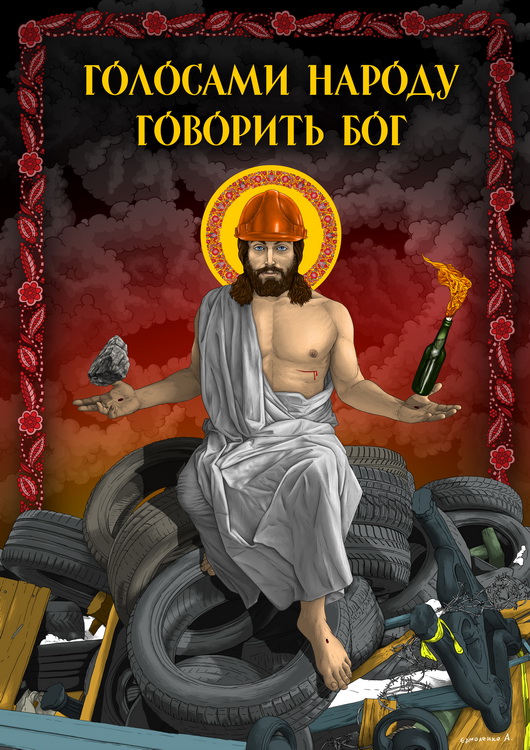
Vox populi vox Dei, Andriy Yermolenko
Dr. Moussienko grasped this existential uniqueness of the local revolutionary process. She realized how necessary it was to provide a first-hand, and therefore the most convincing "transcript," the first exposure of the heroic, unique "intervention" of the young, very young and not quite young members of the local artistic community in the very vortex, the very epicenter of Ukraine’s events. She also recorded all their uncertainty and the associated risks and dangers.
Posters. Installations. Photos. Sculptures. Paintings. Music. Theatre. Film. Literature. Art centers. Exhibitions. Etcetera. In short, all this aesthetic diversity of Maidan that filled the entire space within Kyiv and went beyond the limits of the capital to the national level. Dr. Moussienko's book is a chronicle of all the main facts and leading figures of this striking artistic corps that suddenly emerged in the middle of the city, in the middle of the national history.
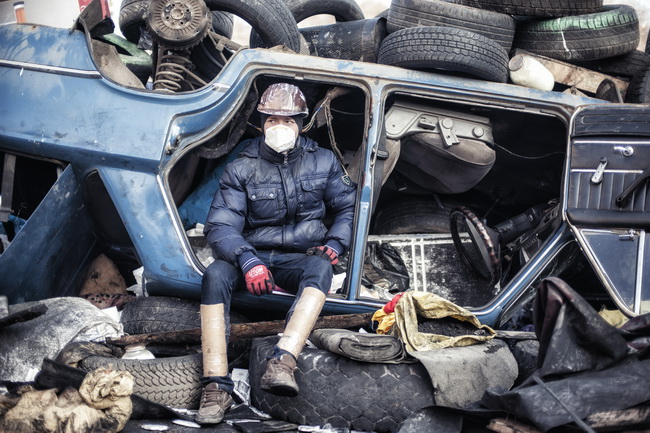
2013-2014 EuroMaidan by Mykyta Zavilinsky
This is just the first step in the process in the future "cataloguing" of all the scenes and semantics of Maidan. But it's has been made! The author is a bit like a volcanologist studying the substance while it's still red hot and classifying it on the site of a recent eruption.
It's worthwhile reminding here that the author, the researcher of the volcano, is a woman who had the courage, despite all the risks of the situation, to go for her research.
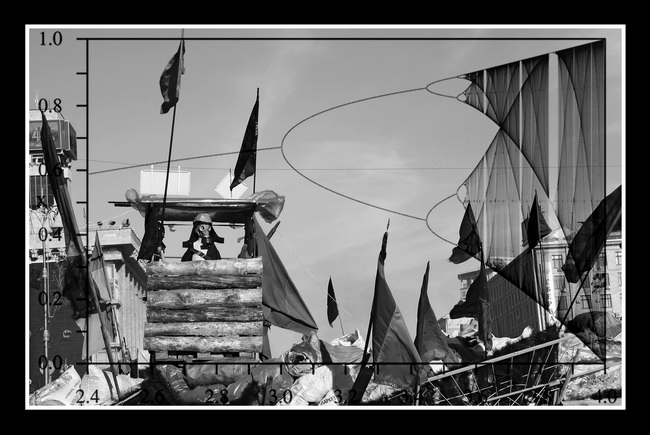
By Anton Hauk
So, the first step has been made. To experience its cognitive effects, just open the pages of the elegant book designed by artist Marian Luniv. The author, despite the restrained and down-to-business tone of her narrative, managed to touch upon the most important thing: the nerve of the Maidan aesthetics. Art with its eternal generic spirit of non-alienation (or rather dis-alienation) provided the most important message of the events: the boundless pathos of freedom in the Maidan events. The "politics," the book argues, was only an instrument of this pathos, just running errands for it.
Art, whether "realistic" or otherwise, is always free. Therefore, it not just came to Maidan. In fact, it created it. You can read about it in the book by Dr. Moussienko.
Translated by Anastasia Leonova
Follow us at @OfficeWeek on Twitter and The Ukrainian Week on Facebook

